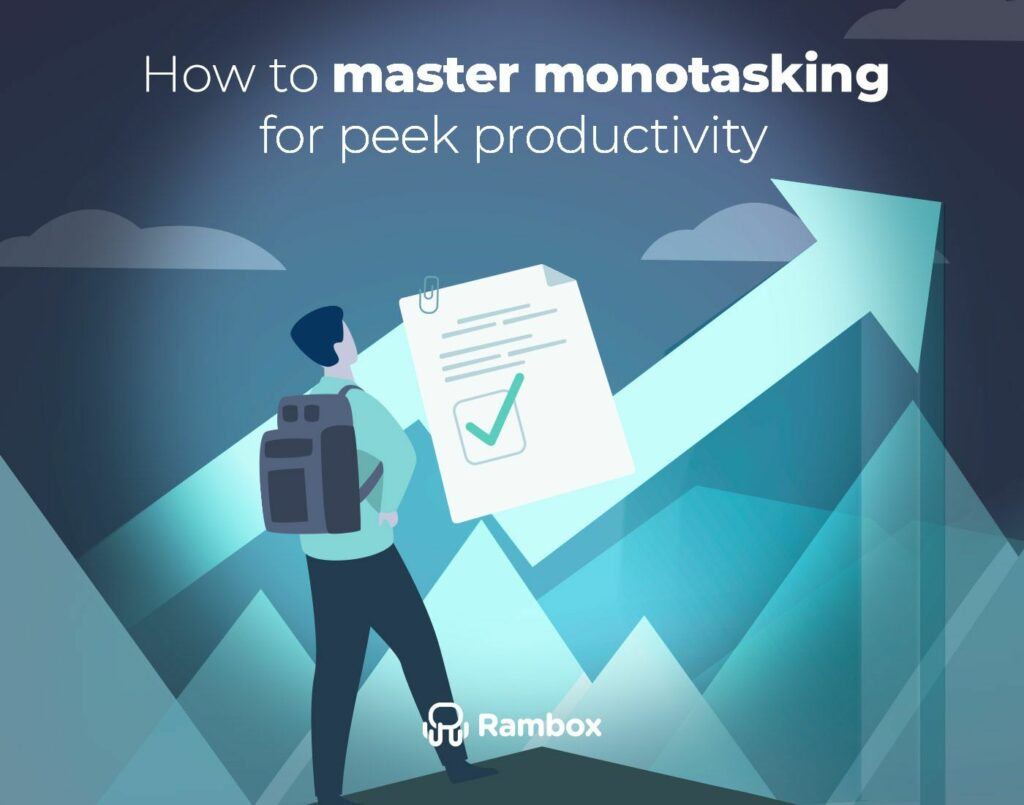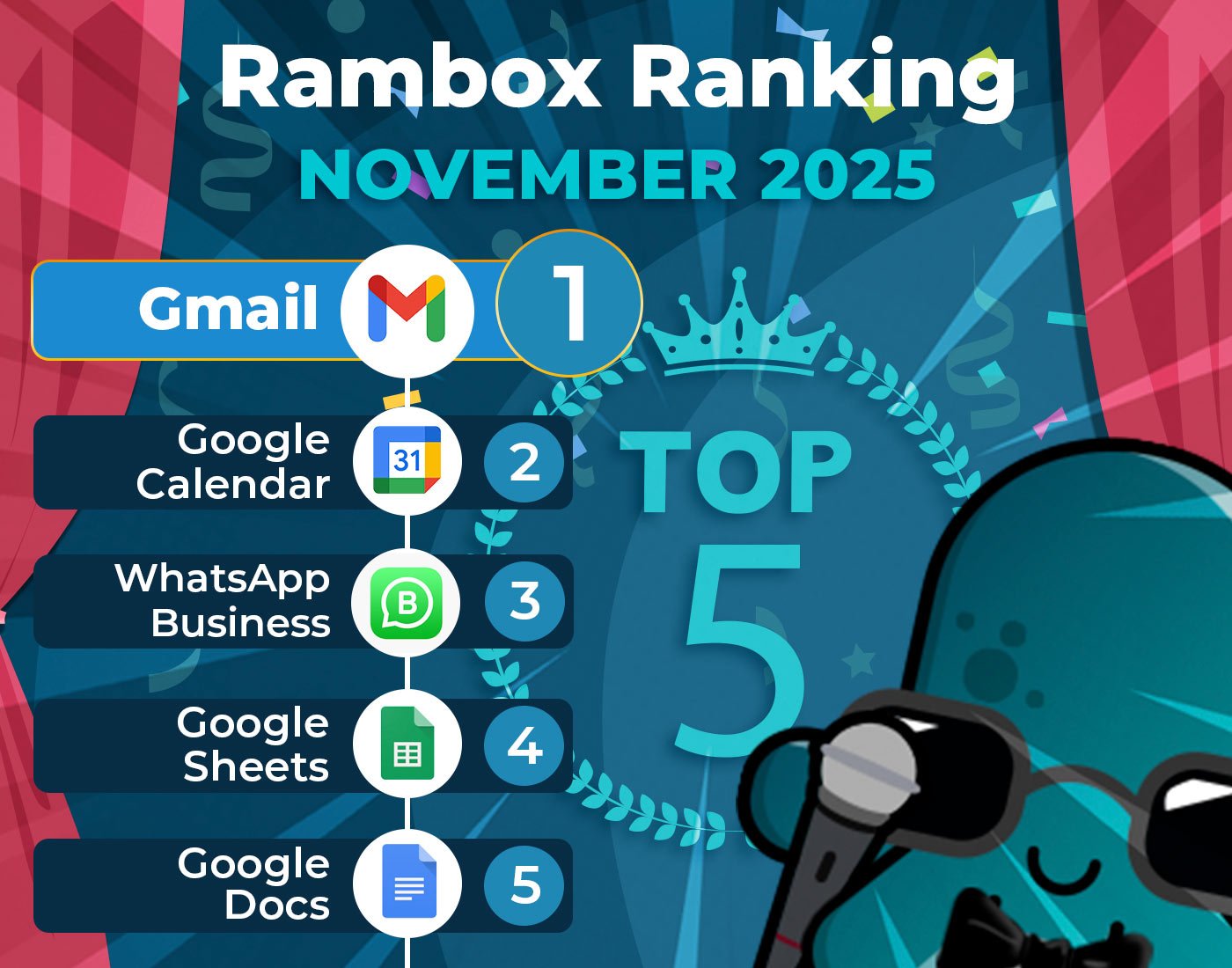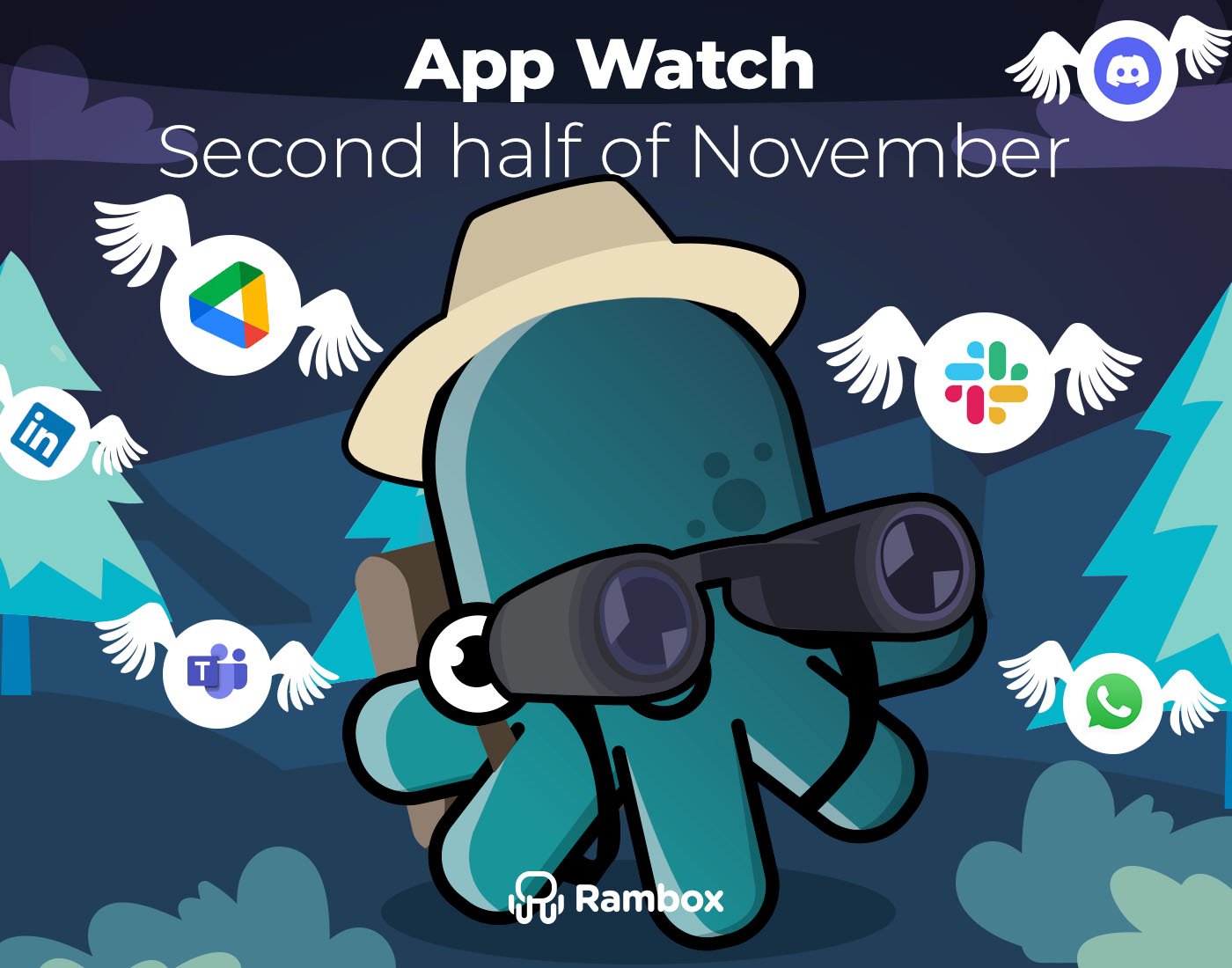Monotasking takes center stage in a world where multitasking often steals the spotlight, offering a refreshing perspective on approaching our to-do lists. Picture this: instead of juggling multiple tasks like a circus performer, imagine gracefully navigating your responsibilities with laser-like focus.
But what exactly is monotasking, and how does it differ from its notorious counterpart, multitasking? As we embark on this journey, we’ll explore the benefits of embracing monotasking, weigh the pros and cons compared to multitasking, and equip you with practical tips, tools, and techniques to incorporate monotasking seamlessly into your daily routine.
Contents
What is monotasking?
In simple terms, monotasking is the art of doing one thing at a time and doing it well. It’s like sipping your favorite coffee without checking emails or conquering that project without the nagging hum of distractions.
Imagine a world where your attention isn’t split into a dozen fragments but hones in on a single task, like a spotlight on a Broadway stage. That’s monotasking for you – a deliberate choice to give undivided attention to the task.
So, why monotask? Well, it’s not about ditching multitasking entirely; it’s about strategically choosing when to go all in. It’s the secret sauce for quality work, reduced stress, and a sense of accomplishment.
Benefits of monotasking
Why choose monotasking over multitasking mayhem? Let’s uncover the valuable perks waiting for you:
- Improved focus and concentration: Monotasking invites you to dive deep into concentration. With undivided attention to a single task, you complete it and excel. No more splitting your focus among various tasks—it’s all about laser-sharp concentration.
- Enhanced task quality: It’s the quality that counts. Monotasking allows you to invest your creativity and expertise into one project, ensuring a higher output standard. No more rushed, subpar results; monotasking is the key to crafting excellence.
- Error prevention: Monotasking safeguards against errors. You significantly reduce the likelihood of oversights and mistakes by channeling your attention into a single task. This focused approach lets you catch potential errors before they escalate, contributing to a more accurate and polished result.
- Enhanced memory retention: Monotasking allows your brain to absorb and retain information fully. Giving your undivided attention to a single task creates stronger neural connections, improving your ability to recall details later.
- Efficient problem solving: When you monotask, your mind can delve deep into problem-solving without the interference of competing thoughts. This focused approach enhances your analytical skills, making it easier to tackle complex issues.
- Reduced stress and overwhelm: Ever feel like your to-do list is an unscalable mountain? Monotasking transforms it into manageable hills. Focusing on one task at a time reduces stress, gains control, and creates a clear path to success.
However, if multitasking is necessary from time to time, we show you how to master it.
Monotasking vs multitasking: Pros & Cons
Let’s pit monotasking against its frenetic counterpart, multitasking, and examine the pros and cons of each:
| Monotasking | Multitasking | |
| Pros | Allows for strategic allocation of attention to a specific task, minimizing the risk of oversight. | Provides a perception of efficiency as it tackles multiple tasks simultaneously. |
| Focusing on one task at a time facilitates thorough understanding, promoting detailed and thoughtful work. | Offers variety, preventing monotony, and potentially boosting creativity. | |
| Minimizes the risk of mistakes and enhances overall work quality. | Multitasking can enhance adaptability as it requires managing different tasks simultaneously, fostering flexibility. | |
| Focusing on one task at a time reduces stress, providing a sense of control. | Multitasking can improve the ability to switch between tasks swiftly, adapting to dynamic work environments. | |
| The focused approach enhances analytical skills, making it easier to tackle complex issues. | Multitasking can optimize resource utilization by concurrently addressing various aspects of a project or workflow. | |
| Cons | May take more time, especially with numerous tasks. | Juggling tasks can compromise the quality of work due to divided attention. |
| Intense focus on one task might lead to procrastination on others. | The constant shift of attention in multitasking can heighten stress levels. | |
| Managing multiple tasks concurrently may lead to a sense of overwhelm. |
5 Tips for mastering monotasking
Now, let’s dive into some super practical tips to help you become a monotasking wizard and unleash a new wave of productivity in your daily grind.
- Start with Smart Prioritization: Imagine you’ve got a to-do list that’s as long as a giraffe’s neck. Instead of feeling overwhelmed, pick out the tasks that truly matter – those impactful ones that align with your big goals. Start your day by knocking these out first, and watch your productivity soar.
- Define Your Mission with Clear Goals: You have a project to tackle. Instead of just diving in, set specific goals. For example, if you’re writing an article, your goal could be to finish the outline by noon. Having clear goals guides your work and adds a satisfying sense of achievement with each completed task.
- Zap Distractions Out of Existence: You’re in the zone, cranking out work, and suddenly ping! – a notification grabs your attention. To avoid this, turn off non-essential notifications, close those extra tabs, and create your little bubble of focus. Imagine the satisfaction of uninterrupted work – it’s a game-changer.
- Master the Art of Saying No: Your plate is complete, and someone asks for help on an extra project. It’s okay to say no. Visualize protecting your focus and maintaining balance, ensuring each task gets the attention it deserves.
- Reflect, Adjust, and Rock On: Imagine regularly checking in on your monotasking skills. What’s working well? What needs a tweak? Visualize making minor adjustments based on these reflections, fine-tuning your approach, and continually rocking your monotasking game.
Tools and techniques for monotasking
We have talked about productivity methodologies before, but today, we will focus on those that help you implement monotasking.
Eisenhower Matrix
The Eisenhower Matrix, also known as the Urgent-Important Matrix, is a prioritization framework that helps categorize tasks based on their urgency and importance. It divides tasks into four quadrants:
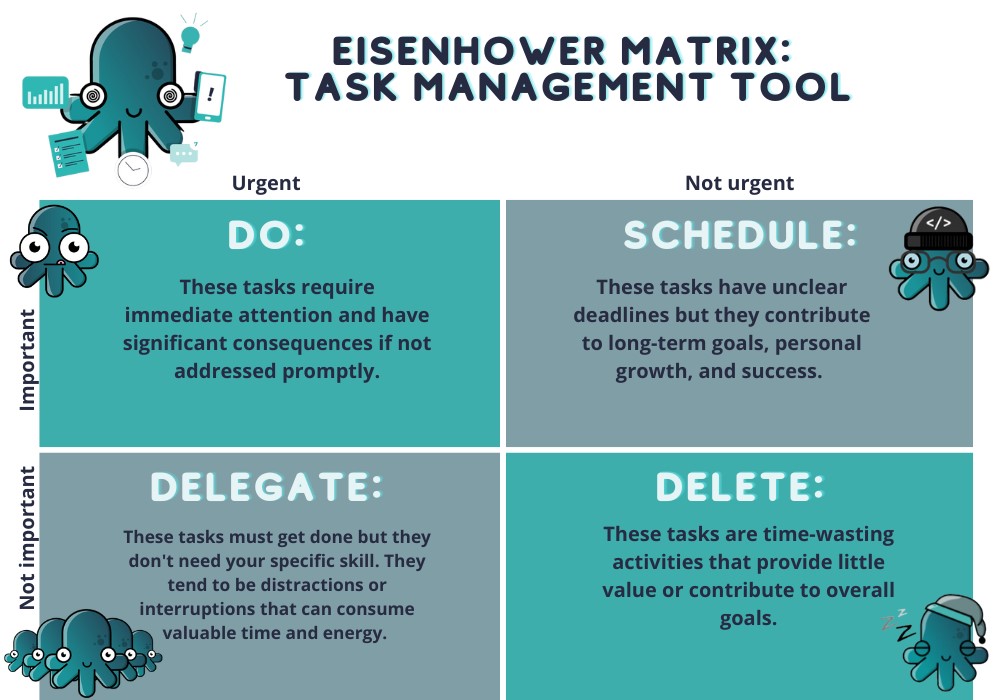
Suggested app: Rambox
Rambox is a workspace organizer that streamlines multiple applications into a unified interface, making it an ideal tool for those prioritizing productivity across various business and personal applications. Leveraging Rambox can significantly enhance the implementation of the Eisenhower Matrix by providing a centralized platform for task categorization and prioritization.
Rambox allows users to create multiple workspaces, enabling the grouping of applications based on different categories, projects, or specific contexts. This aligns seamlessly with the task categorization needs of the Eisenhower Matrix.
For instance, you can create separate workspaces within Rambox to represent each quadrant of the Eisenhower Matrix. Dedicate a workspace to Quadrant 1, another to Quadrant 2, etc. This segregation visually organizes your applications and tasks according to their urgency and importance.
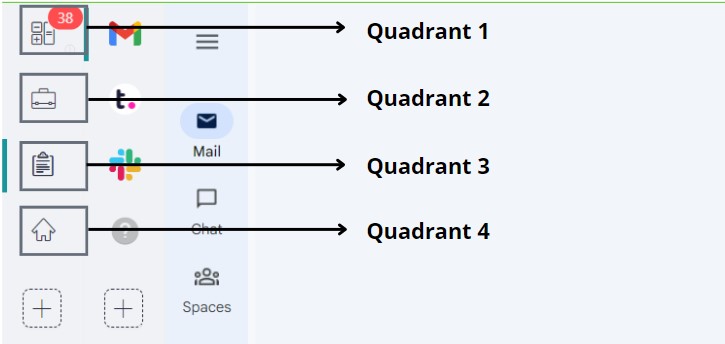
Pomodoro technique
The Pomodoro Technique is a time management method that encourages working in focused, short bursts, known as “Pomodoros,” followed by brief breaks. This technique enhances productivity and concentration by breaking tasks into manageable intervals.
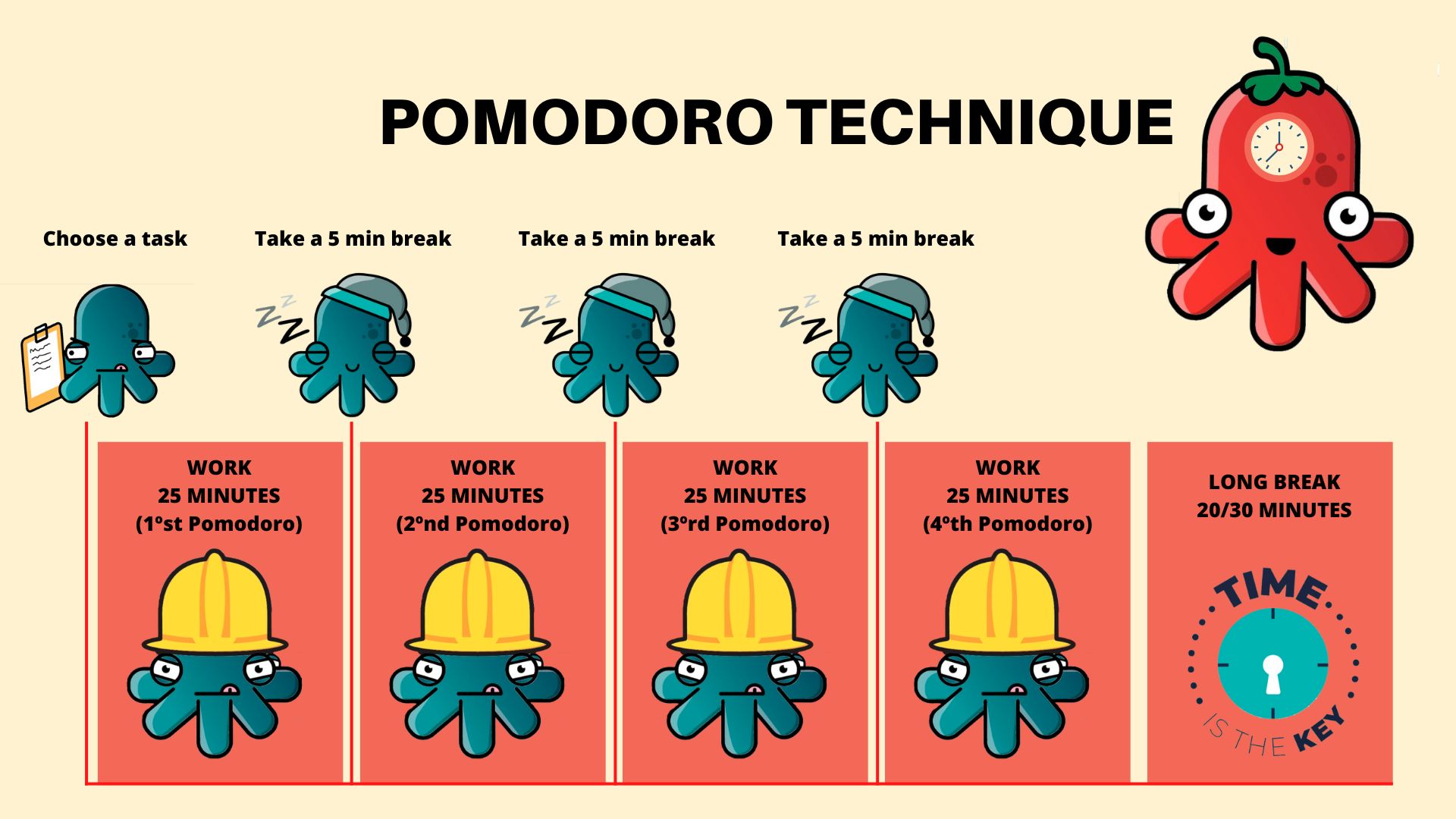
Suggested app: Paymo
Paymo, a comprehensive work management platform, seamlessly incorporates task planning, scheduling, time management, and invoicing. It’s designed for organized work and timely project delivery.
It enhances productivity by integrating the Pomodoro technique into its desktop widget. Accessing it is simple—open the widget, select a project, and choose tasks to work on using the Pomodoro method.
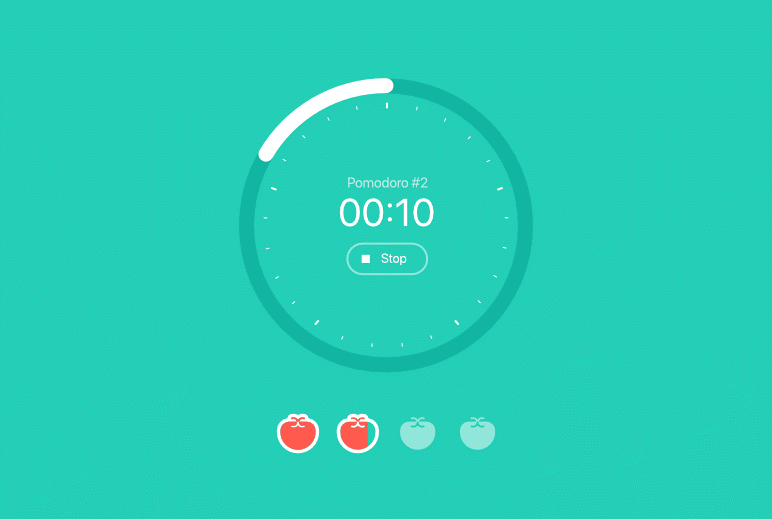
Source: Paymo App
The interface features a 25-minute timer presented as a countdown, adhering to the Pomodoro principle. During Pomodoros, notification alerts are disabled, ensuring uninterrupted focus. You can activate alerts when a session ends.
Should you need to interrupt a Pomodoro block, Paymo offers flexibility. The visual percentage resets, but the recorded time remains in your timesheet, allowing for accurate tracking of your work sessions. Paymo’s integration of the Pomodoro technique adds a valuable time management tool to its features.
Overcoming challenges
Let’s explore some common hurdles and discover practical strategies to overcome them, ensuring your path to heightened focus and productivity stays smooth.
Distractions creeping in
Imagine this: you’re fully immersed in an essential task on your computer, trying hard to stay focused on one thing. Suddenly, your communication and collaboration apps buzz with constant notifications, demanding immediate attention. Colleagues swing by for non-urgent matters, and the constant ping of incoming emails disrupts your focus. These digital distractions break your flow and can lead to errors or incomplete work, defeating the purpose of effective monotasking.
Rambox has your back. Customize your notifications to decide how and when you receive them, ensuring you stay connected without feeling overwhelmed.Mute notifications effortlessly to establish a focused, distraction-free work zone. A simple right-click on your applications or workspaces lets you choose whether you want alerts with sound, on mute, or without notifications.

Activate Rambox’s Focus Mode, and suddenly, the constant stream of interruptions stops. It’s like a digital shield, enabling you to fully immerse yourself in the project without being incessantly pulled away by notifications from various communication apps.
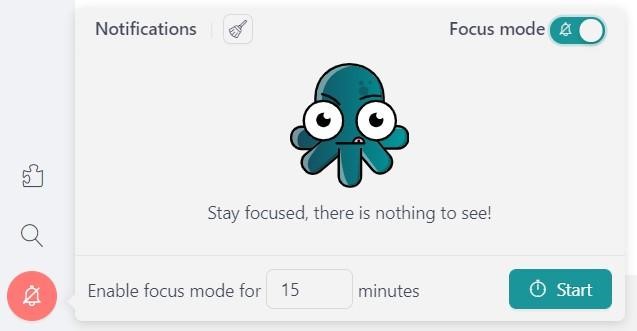
There is no need to fret about missed notifications while working with Focus Mode enabled. When you turn it off, all those notifications await you in your Notification Center. Rambox empowers you, putting you in control and making it easier to maintain your monotasking flow.
Procrastination sneaking around
Picture this: you’re ready to tackle a significant task on your computer, fully committed to monotasking. However, procrastination stealthily creeps in, tempting you to delay the task. The allure of social media, online distractions, or non-essential tasks becomes increasingly tempting, jeopardizing your commitment to monotasking and hindering productivity.
Rambox becomes your ally against procrastination! It’s a treasure chest of over 700 apps, offering many techniques to help you stay focused. From essential productivity tools to cool time management apps like Paymo and Todoist, you can choose the ones that suit your style.
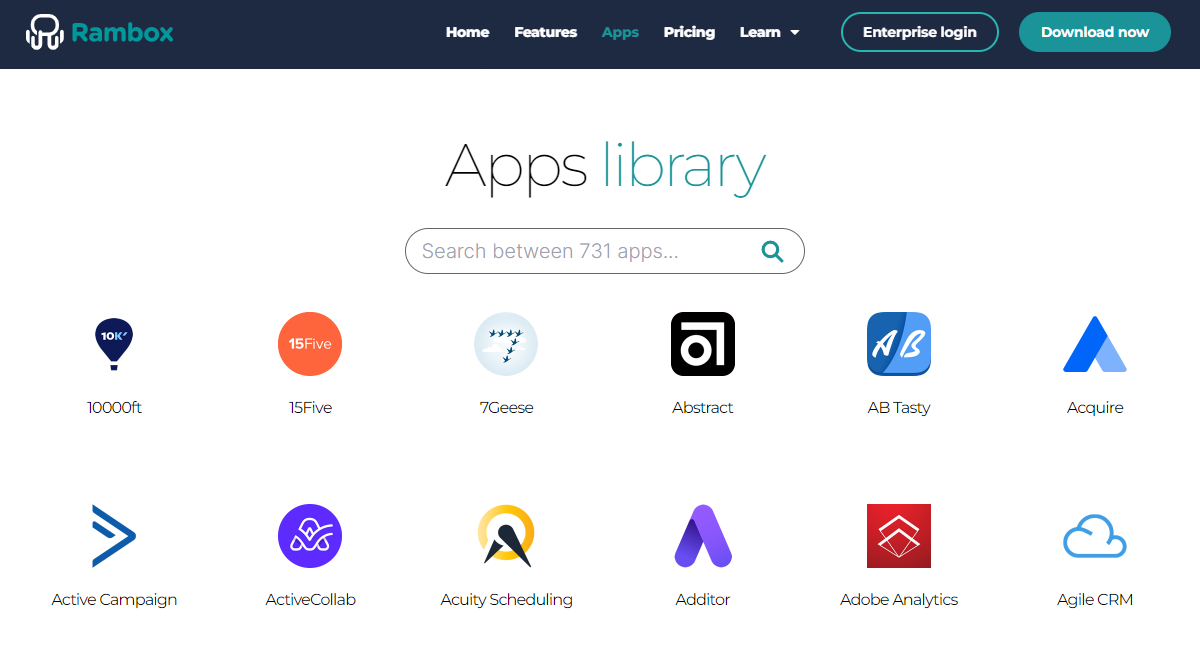
But that’s not all! Rambox’s Workspaces feature empowers you to arrange all your apps just as you like. With pre-existing different layouts, you can adapt them to your workflow.

Like Rock, paper, scissors, where organization beats procrastination, Rambox helps you stay organized and focused, ensuring procrastination doesn’t sneak into your productivity game.
Now that you know how to master monotasking and how Rambox can help you, try Rambox for free. All you have to do is download the program, configure it to your liking, and enjoy its functionalities. No cards, no cheating, it’s that simple!
